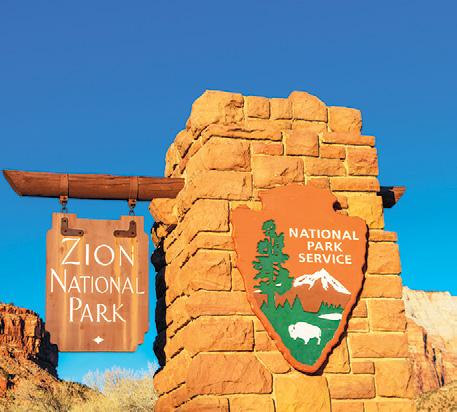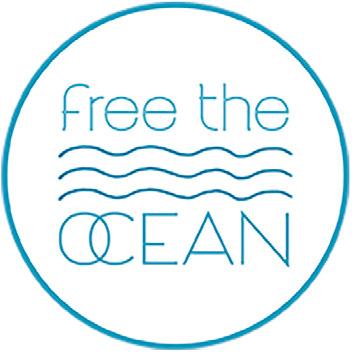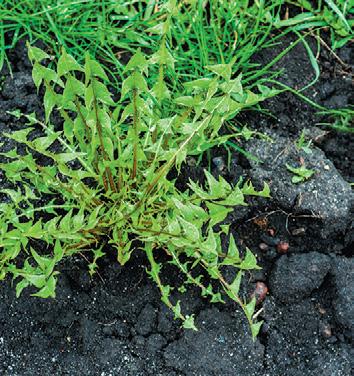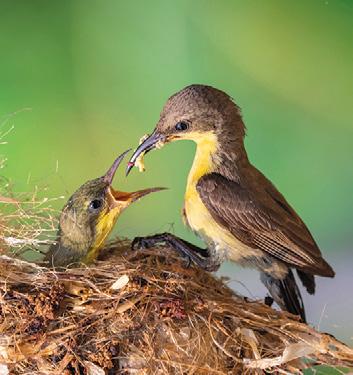
5 minute read
global briefs
global briefs Off Limits
National Parks Enacting New Regulations
Advertisement
Because our national parks and protected areas are feeling the pressure of increased demand for outdoor recreation, the National Park Service (NPS) has cracked down on some recreational activities to better manage the human impact on natural environments. In 2021, the national park system hosted nearly 300 million recreational visits, and 44 parks set visitation records. The high number of cars creates congestion, pollution and collisions with wildlife. Overcrowding on trails can lead to higher risk of hiking accidents and illegal off-roading.
Two Utah national parks will start requiring reservations. At Zion, Rocky Mountain and Glacier national parks, guests need a permit to hike certain routes. Arches National Park guests will have to book timed entry tickets during the high season. Acadia and Zion announced the temporary closure of some popular climbing sites starting this month to ensure that peregrine falcons can nest without disturbance.
In 2021, the NPS gave park superintendents the authority to ban e-bikes if they adversely impact natural resources or other visitors, as well as scenic air tours at dawn or dusk or within a half-mile of the ground. Biologically important behaviors for many species occur during sunrise and sunset such as foraging, mating and communication. The hours of operation provide quiet periods of the day during which visitors can enjoy natural sounds and preserve opportunities for solitude in designated wilderness areas.
MichaelVi/AdobeStock.com

Ban Plastics in National Parks
Our national parks are places of unparalleled scenic beauty and wildlife for all of us to enjoy. These national treasures are being threatened by plastic trash. Nonprofit Free the Ocean is circulating a petition to Get Single-Use Plastic Out of U.S. National Parks. Sign it at Tinyurl.com/PlasticParkPetition.

C
M
Y
CM
MY CY CMY K©2022 Free the Ocean. Cheryl Tuttle & Marcy LaBella Earthlygoddess02@gmail.com
Clay
Drawing
Painting
Fiber Arts
Jewelry
Mixed Media
860•349•0251
352 Main St.-Rear Durham, CT 06422 Check out our class schedule in the calendar section! facebook.com/earthlygoddess3
Maintain your youth
with Homeopathic HGH Transdermal Gel Maximum Strength Somatropin
Unique and affordable alternative designed to support your pituitary gland! Usage may
• Improve Bone and Joint Health • Improve Sleep • Increase Muscle and Reduce Fat Contact Shirley R. Bloethe 860-989-0033 or www.PassItOnLLC.com
Final Journey, LLC
(Pet Euthanasia Service) Kristen Klie, D.V.M. and Associates
(203) 645-5570 www.finaljourneyllc.com
KCC_bc_final_vendor2.pdf 1 10/25/15 11:26 AM
Weeds Attract Pollinators to Increase Harvests
A recent study published in Insects compared mango trees at a local farm in Homestead, Florida, where Kiryakova Anna/AdobeStock.com one plot of trees had weeds growing around them and another plot was maintained to be weed-free. It turns out that the presence of weeds benefits trees and pollinators. “Weeds actually do a lot of good. It might be helpful to think of them of wildflowers,” says Blaire Kleiman, the Florida International University Institute of Environment graduate teaching assistant and alumna who, under the guidance of professors Suzanne Koptur and Krishnaswamy Jayachandran, undertook this research funded by the U.S. Department of Agriculture’s Hispanic-Serving Institutions Education Grants program.
Fruit trees can’t live without pollinators. Bees and other insects have been shown to increase the size and quality of yields from 70 percent of the leading, economically important crops in the world, but it’s getting harder to bring bees to the trees. Over the last 30 years, pollinator numbers have declined significantly. Farmers already rely on insectary plants to attract pollinators, and Kleiman notes that her findings apply to 80 percent of all flowering plants of Earth, including vegetables like tomatoes, beans, eggplants and squash. She wants her study to help farmers also reduce the use of chemical pesticides that harm pollinators.

Climate Change Causing Birds to Lay Eggs Earlier
In a new study, “Climate Change Affects Bird Nesting Phenology: Comparing Contemporary Field and Historical Museum Nesting Records,” published in the Journal of Animal Ecology, scientists were able to determine that about a third of the bird species nesting in Chicago are laying their eggs a month earlier than they did 100 years ago by comparing eggs preserved in museum collections to modern observations. Researchers think the culprit in this shift is climate change.
John Bates, curator of birds at the Field Museum and the study’s lead author, says, “The majority of the birds we looked at eat insects, and insects’ seasonal behavior is also affected by climate. The birds have to move their egglaying dates to adapt. Egg collections are such a fascinating tool for us to learn about bird ecology over time. I love the fact that this paper combines these older and modern datasets to look at these trends over about 120 years and help answer really critical questions about how climate change is affecting birds.”
Bates advises, “These early egg people were incredible natural historians in order to do what they did. You really have to know the birds in order to go out and find the nests and do the collecting.”
yod67/AdobeStock.com

Cool It
South Pole Registers Historic Temperature
Normally, temperatures fall with the end of the southern summer, but the Dumont d’Urville station, on Antarctica, registered record temperatures for March of 40.82° F at a time of the year when readings are usually already Romolo Tavani/AdobeStock.com sub-zero. Gaetan Heymes, of France Meteo, describes the unseasonably mild weather as a historic event. The U.S. National Snow and Ice Data Center says that Antarctica’s sea ice fell below 772,204 square miles in late February for the first time since 1979. Around the same time, the Conger Ice Shelf, as big as Los Angeles, collapsed into the sea and there was sufficient atmospheric moisture to produce a significant snowfall. While researchers can’t definitively say that climate change is to blame, Jonathan Wille, a postdoctoral researcher at the Université Grenoble Alpes, in France, notes, “It was something we didn’t think was possible in Antarctica—the magnitude of heat, especially in what should be the cold season in Antarctica. We’ve never seen the atmosphere behave like this over Antarctica.”
The heat wave and dramatic inland snowfall highlight the importance of a better understanding of the complicated dynamics of atmospheric rivers that maintain the ice sheet now, but could be cause for concern in the future. Understanding these patterns better could be the key to learning the polar region’s fate.









